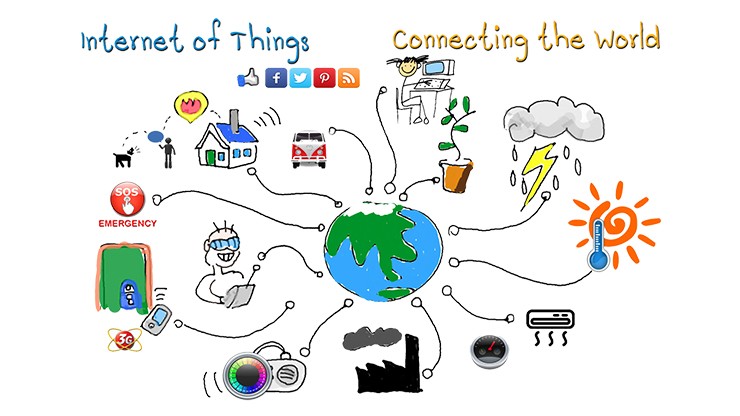
Did you know: The Internet of Things is regarded as the next Industrial Revolution because of the manner in which people work, live, entertain and travel as well as how businesses and governments interact with the world.
The Internet of Things (IoT) has a vast global reach and given its phenomenal reach it is already a multi billion-dollar industry. Over the span of next 5 years, businesses are predicted to invest about $6 trillion in the IoT arena. It is a technology which is massively driven by data which will enable the organizations to optimize and analyse the operations efficiently and swiftly. Many even regard IoT as the vital part of the digital transformation as it is set to metamorphose not just the manner in which data is collected or stored but also the very process of information analysis which in a way would allow better strategy modification and decision making. For those who can get access to the pioneer IoT solutions offering insights around accurate market forecasting, risk management, customer behaviour prediction, and others, there’s probably no stopping. However, the fact of the matter is IoT is still a pristine technology that has its own share of challenges and risks to manage.
When we speak about the threats and risks of IoT, the ones on the top remain privacy and security. Be it our personal or business lives, we are inundated with IoT tech, no matter whether we accept it or nor. These devices will go on collecting and distributing the information about us continually. The aim indeed is to benefit us but given the impact it has on our security and the kind of interference it may have in our lives, effects of it could be disastrous.
Another concern of IoT deals with the environment and our advancing needs of energy consumption. With umpteen number of IoT devices such as sensors and wearables, all assuring an improved quality of life, only few actually contemplate the impact of such networks on the environment. Several experts however are paying due attention on the resource usage and the energy drain. More so, many of the current IoT devices are low-data transmitting and the low power devices. Some even use vibrations, heat or sunlight to power themselves. Sadly, this trend may not prolong since the IoT is sought to come up with high-functioning devices in the future which would demand access to the mains power to perform its functions.
Though IoT is a global phenomenon however like with any other tech, it is seen to be less obvious in the developing world. We have observed some instances of IoT and wearable devices which have made a real difference in this world right from environmental sensors to water pump monitoring and disaster to disease tracking, but the bigger picture is that IoT affects the advantaged developed world and overlooks the developing or in need countries.
We can only hope that the McKinsey’s predicted IoT economic impacts stated between $3.9 trillion to $ 11.1 trillion annually by 2025 does include solutions that are not limited to the most affluent and worthy nations of the world. For the IoT enthusiasts, these challenges above are nothing to shy away from but rather to offer new avenues for development and investigation. We have indeed seen the industry boom in the recent past but it’s uncertain to imagine, what’s in store for the future.